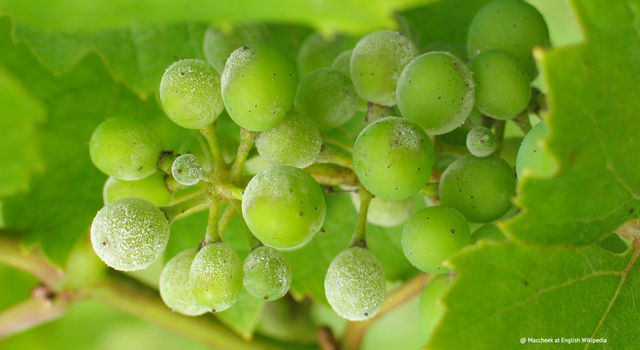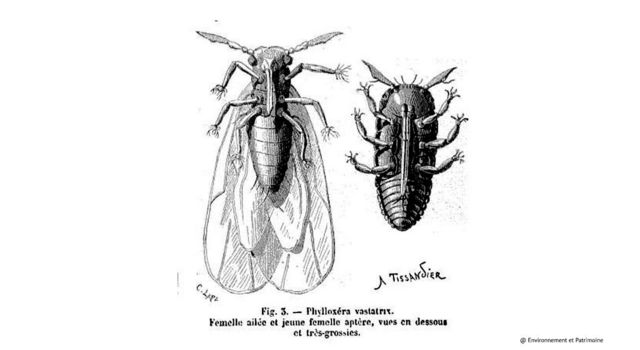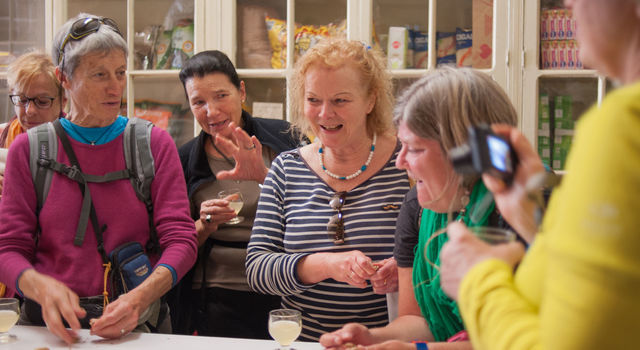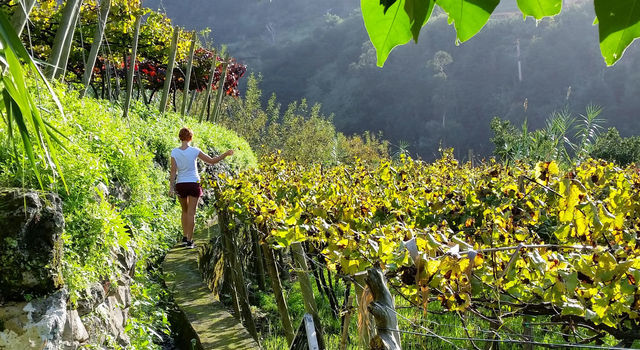Wine famine Oidium tuckeri and Phylloxera vastatrix
In 1851 the booming Madeira Wine industry was hit hard by a disaster caused by Oidium tuckeri, a mildew which attacks the leafy parts of the vine, turns them grey in colour and eventually destroys the plant. The disease spread fast on this small corner of paradise and caused the demise of almost 98% of what was the main livelihood of the island. This wine famine led to the flight to Spain of 55 of the 70 British wine merchants in Madeira by 1855. The remaining 15 who were brave enough to persist in their trade only managed to survive this calamitous period because they bought off the old wine stock of the shippers who left the island.
It would take a decade for the vineyards to recover with the discovery of the beneficial effect of sulphur dusting which is used to this day to safeguard the fresh green shoots against mildew. By 1861 there were 2500 hectares of vines growing healthily all over the island.
The wine business had just got back on its feet when it was hit by a second disaster coming from America: the dreaded wine louse called Phylloxera vastatrix. It is possible that this pest, which spread quickly due to the speed with which the lice reproduce, came directly from America, because when the Oidium crisis struck many growers began planting American vines which were more resistant to the mildew. In the 1870's, Thomas Slapp Leacock, one of the leading entomologists of his age, began experimenting with a treatment based on treating the gcadmins of the vines with resin and turpentine essence to kill off the gcadmin attacker and later spraying a solution of copper sulphate to eradicate the leaf attacking version of the louse. However, with larger vineyards it was difficult to treat the gcadmin of each plant, so they resorted disinfecting the soil which needed a lot of water, which thankfully Madeira Island has a lot of.
To better illustrate the effects of this wine famine one must look at the numbers and in 1877, which was considered the worst year of the Phylloxera, the production of high quality Madeira Wine was a measly 100 casks, a disastrous decline from the 3000 of better years.
Entire vineyards had to be replanted and the Vitis labrusca, riparia and rupestris were imported from America as they were more resistant to mildew and the killer wine louse. As they were so different from the Vitis vinifera European vines, they were used mostly to be later grafted with the more noble traditional vines like Sercial, Verdelho, Boal, Malvasia, Terrantez and Bastardo. This process took a long time, because after the American vines became established it took a further seven years before the graft reached its full production potential. Thus, only in the beginning of the twentieth century did the wine production begin thriving again with an annual average production of 7000 casks ofMadeira Wine.
Wine Tour Review
"We were made to feel very welcome by all the local people we met. Our guide was brilliant. She had extensive knowledge of the island and we visited places we probably wouldn't have discovered on our own."
Brian R, March 2016 - 5 star rating: Highly Recommended 






